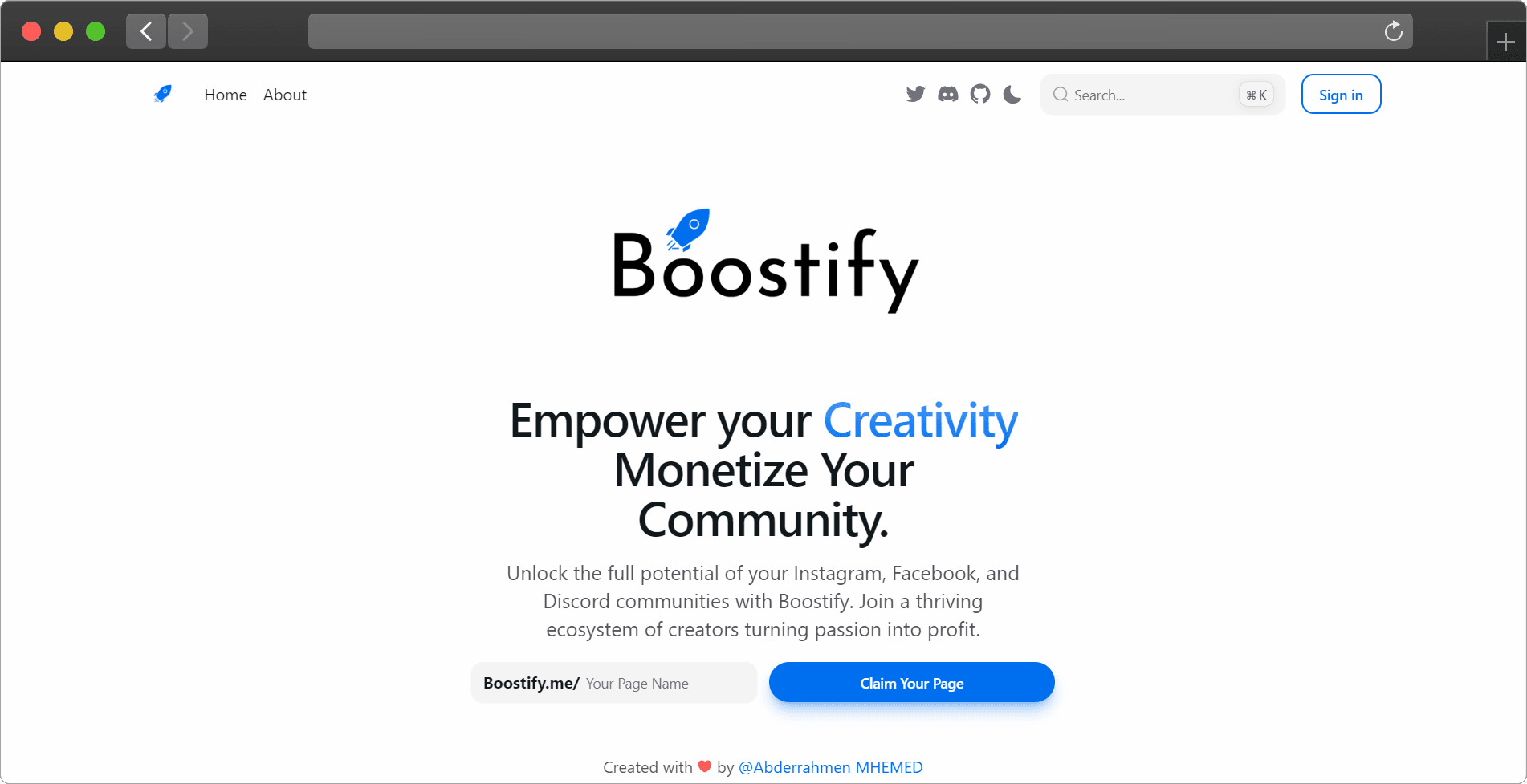June 20, 2024
The Making of Boostify: A Platform for Content Creators

Introduction
In the ever-evolving world of digital content creation, finding a platform that truly caters to the unique needs of creators can be challenging. That's where Boostify comes in. Boostify is designed to empower content creators by providing them with the tools and features they need to succeed. In this blog post, I'll take you through the journey of creating Boostify, from the initial idea to the launch and beyond.
Inception of the idea
The inspiration for Boostify came from observing the struggles of content creators in my country, observing their work and engaging with their audience. Many platforms offered some features, but none seemed to provide a comprehensive solution tailored to the creator's needs, some of them was simply to difficult to set up in the first place. The idea was simple: create a platform that bridges these gaps and supports creators in their journey while staying simple along the way for a better experience for both the content creator and the his community.
Planning and Research
Before diving into development, we conducted extensive market research to understand the specific needs of content creators. We surveyed potential users, analyzed competitors, and identified the key features that would set Boostify apart from platforms like buymeacoffee
My main focus was to make the platform as simple as possible, while also providing the necessary tools for creators to grow their audience and monetize their content.
Key Features of Boostify
- Content Management System: Easily organize and manage your content.
- Analytics Dashboard: Gain insights into your audience and performance.
- Community Engagement: Connect with your audience through comments, likes, and shares.
- Monetization Tools: Explore various monetization options.
Developpement
Boostify developpement took some time to start, with the researches and the planning, I had to find the right tools to make it happen. I decided to use NextJS for the frontend, NextUI for the UI components as well as NestJS for the backend connecting it to a PostgreSQL database.
I will be making another blog post showing exactly the process I go through to develop an app, probably we will start by creating something simple with ReactJS and Shadcn, so stay tuned!